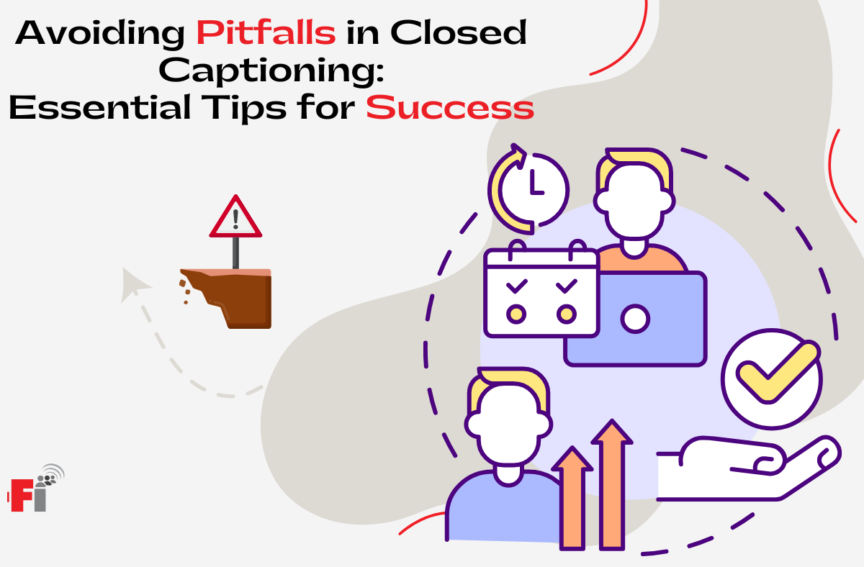Recent studies, like the one by Verizon revealing that 50% of US consumers value captions for silent video viewing and another by Preply showing a significant portion utilizing subtitles for language learning, underscore the crucial role of closed captioning in today’s multimedia landscape. Accurate captioning isn’t just a feature — it’s a necessity. Despite your best efforts, you might find your closed captioning falling short. Often, this is due to common errors that can be easily avoided. Here are five pivotal closed captioning mistakes and how to steer clear of them.
Five Closed Captioning Mistakes to Avoid:
1. Neglecting Adequate Preparation: Effective captioning requires more than just time; it demands a conducive environment, a clear understanding of the content, and the right tools. Failing to allocate sufficient time, caption in a quiet setting, preview your files, or choose the correct subtitle format can compromise the quality of your captions.
2. Overlooking the Power of Transcription: Transcripts are not just a foundation for your captions but a valuable resource for future reference. Skipping transcription can lead to extended correction times, challenges in creating caption files, and reduced content accessibility. Transcripts provide a readable text version of your videos, enhancing understanding and accessibility.
3.Rushing Through Timestamps: Accuracy in timing is critical for captions to align with the spoken dialogue. Hastily estimating timestamps might speed up the process initially but results in poorly timed captions that disrupt the viewer’s experience, particularly impacting those who are deaf or hard of hearing.
4.Ignoring Caption Formatting: Captions should be concise and clearly formatted for ease of reading. Forgetting to manage caption length during the captioning process can lead to overly lengthy or truncated captions, making them difficult for your audience to follow.
5. Skipping Quality Control: Even the most experienced captioners need to review their work. Without a final quality check, you risk overlooking errors in grammar, spelling, punctuation, timing, and formatting.
Four Strategies to Enhance Your Closed Captioning:
Allocate Specific Time for Captioning: Designate focused time solely for captioning to minimize errors and enhance quality.
Integrate Transcription: Utilize transcription as a fundamental step in your captioning process to improve accuracy and efficiency.
Understand the Captioning Process: Familiarize yourself with different subtitle file formats and the nuances of captioning to adapt to various content types.
Regularly Practice Closed Captioning: Commit to practicing closed captioning to develop a comfortable and efficient workflow, helping you tackle challenges like multiple speakers and heavy accents.
Focus Insite: Your Professional Closed Captioning Solution:
Despite your expertise, closed captioning can be a demanding task, especially when balancing multiple projects. Instead of grappling with the complexities of closed captioning, consider partnering with a specialized service provider like Focus Insite. Our team of experienced human transcriptionists offers high-quality closed captioning services, freeing you to focus on your core tasks while we handle the intricacies of captioning.
Discover the benefits of our accurate transcription solutions, including rush services and interview transcription, tailored to your audio or video project needs. For all your transcription and closed captioning requirements, rely on Focus Insite. Contact us at bids@focusinsite.com and let us know how we can support your project with our expert services. Let Focus Insite take the hassle out of closed captioning, ensuring your content is accessible, engaging, and professional.


